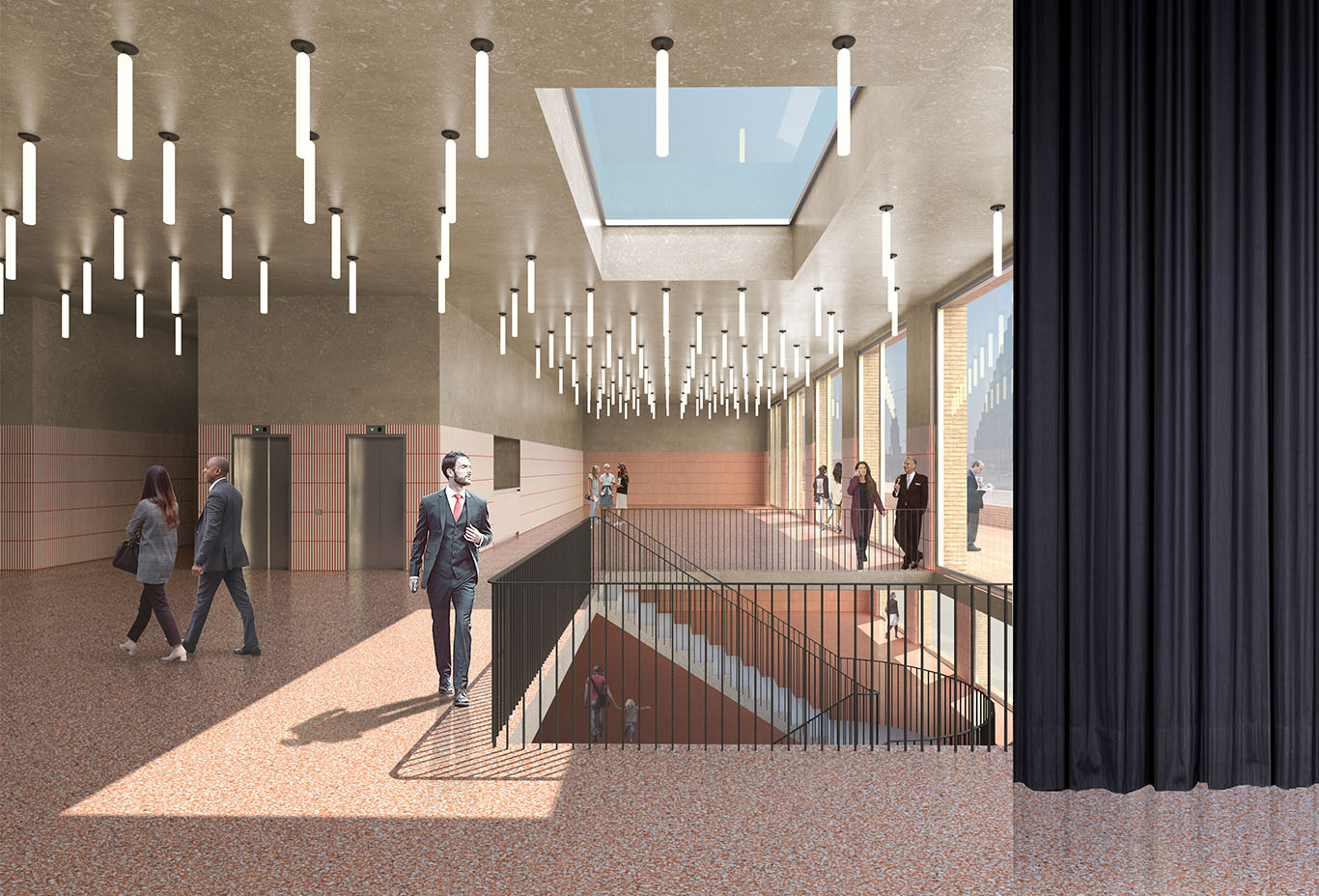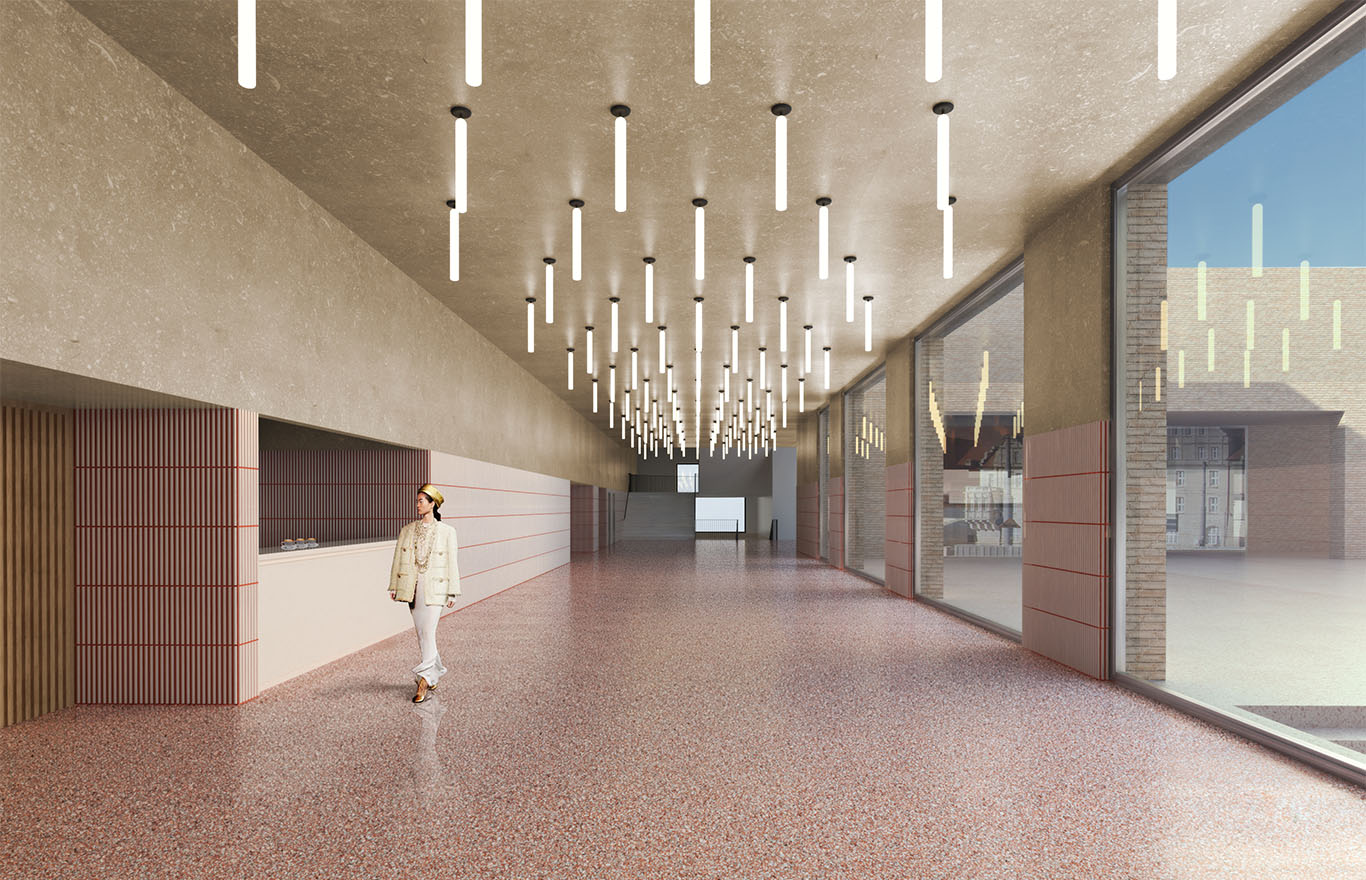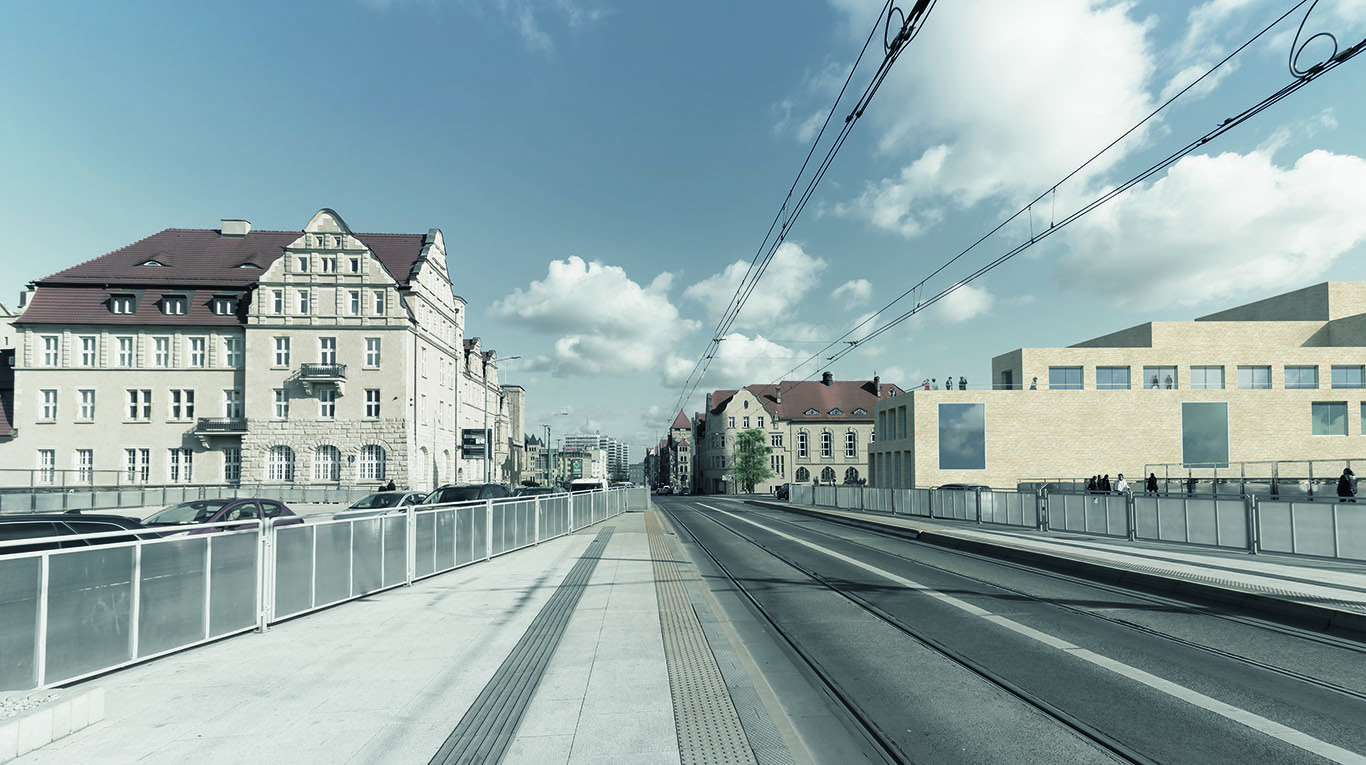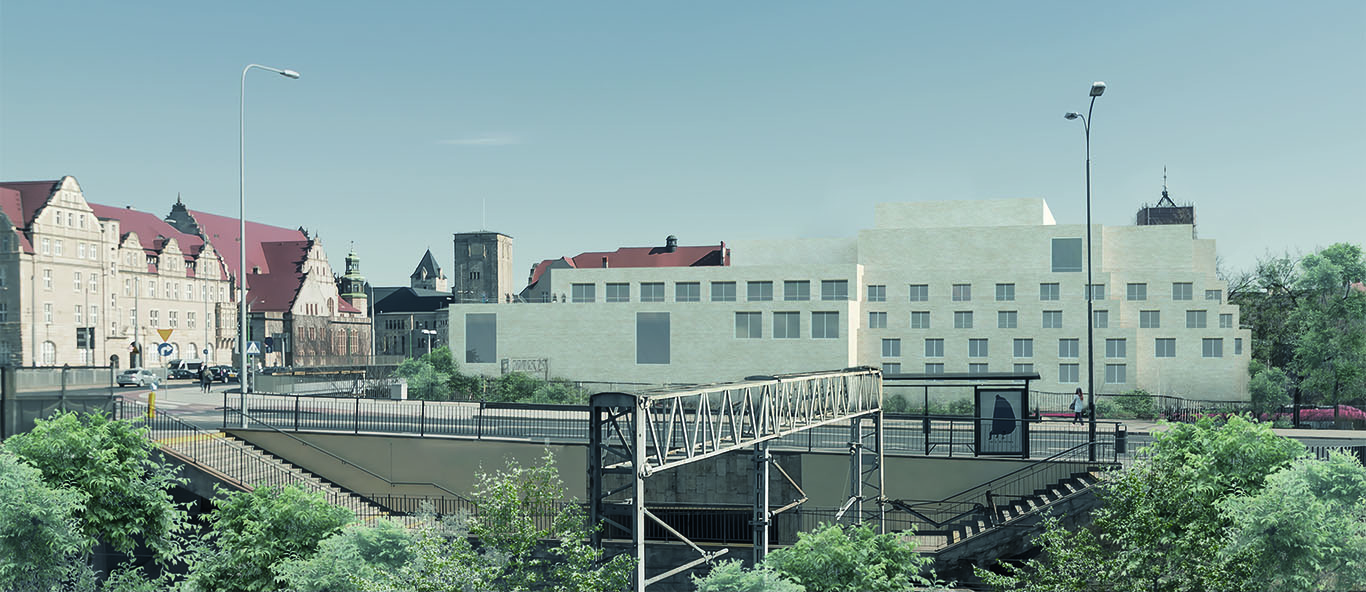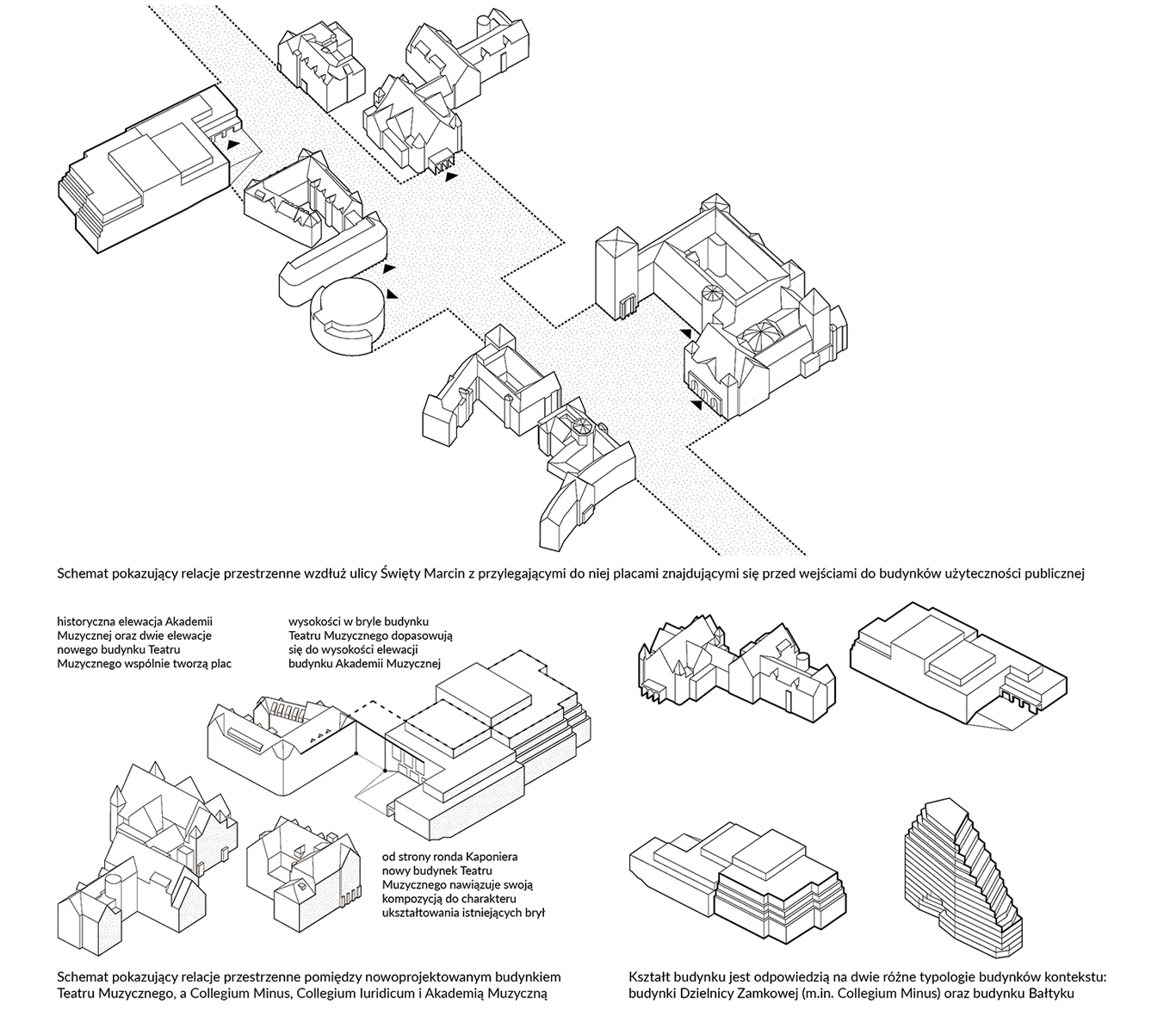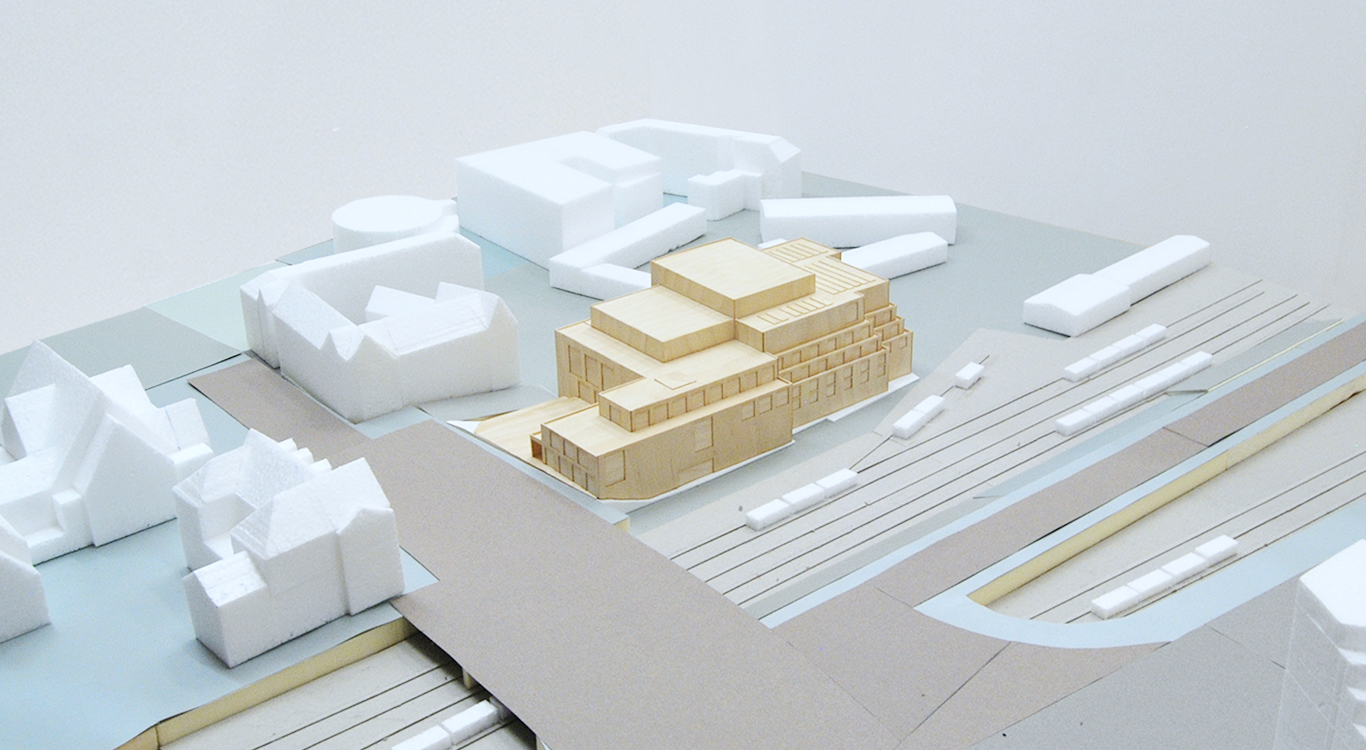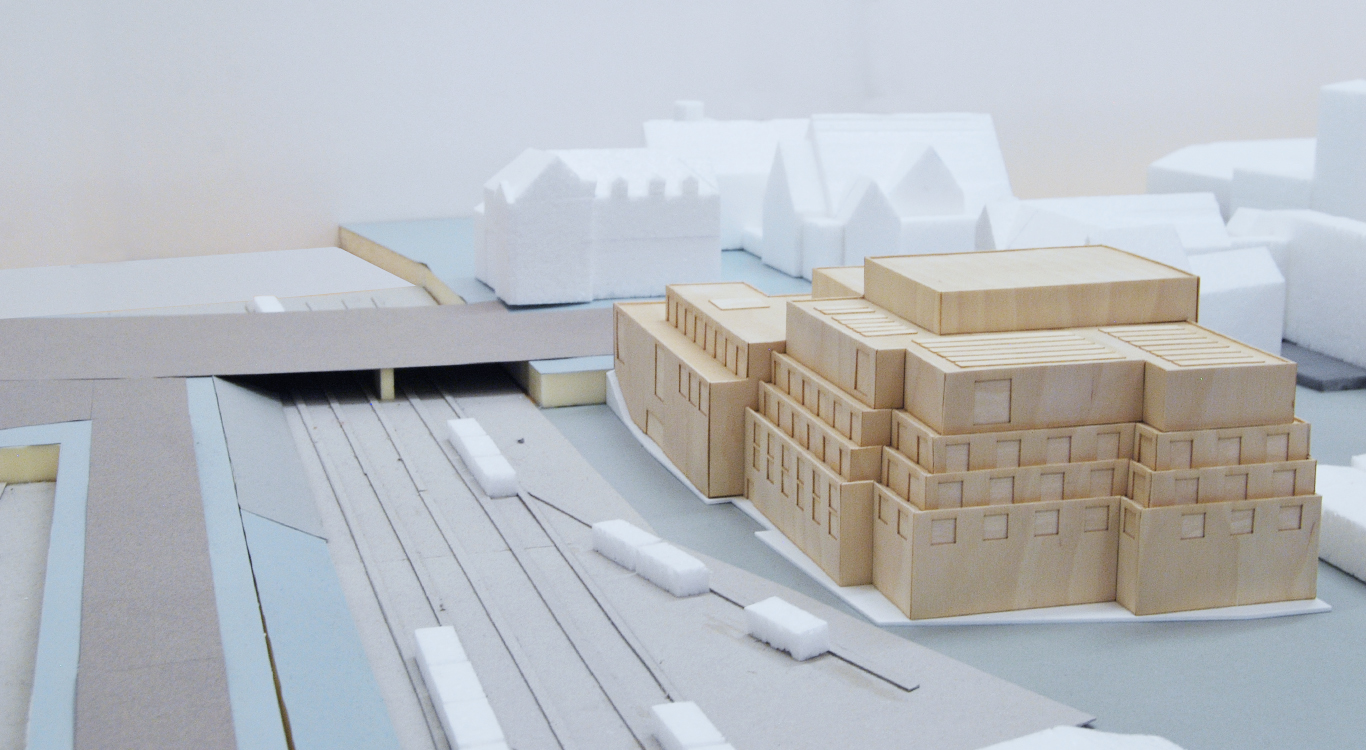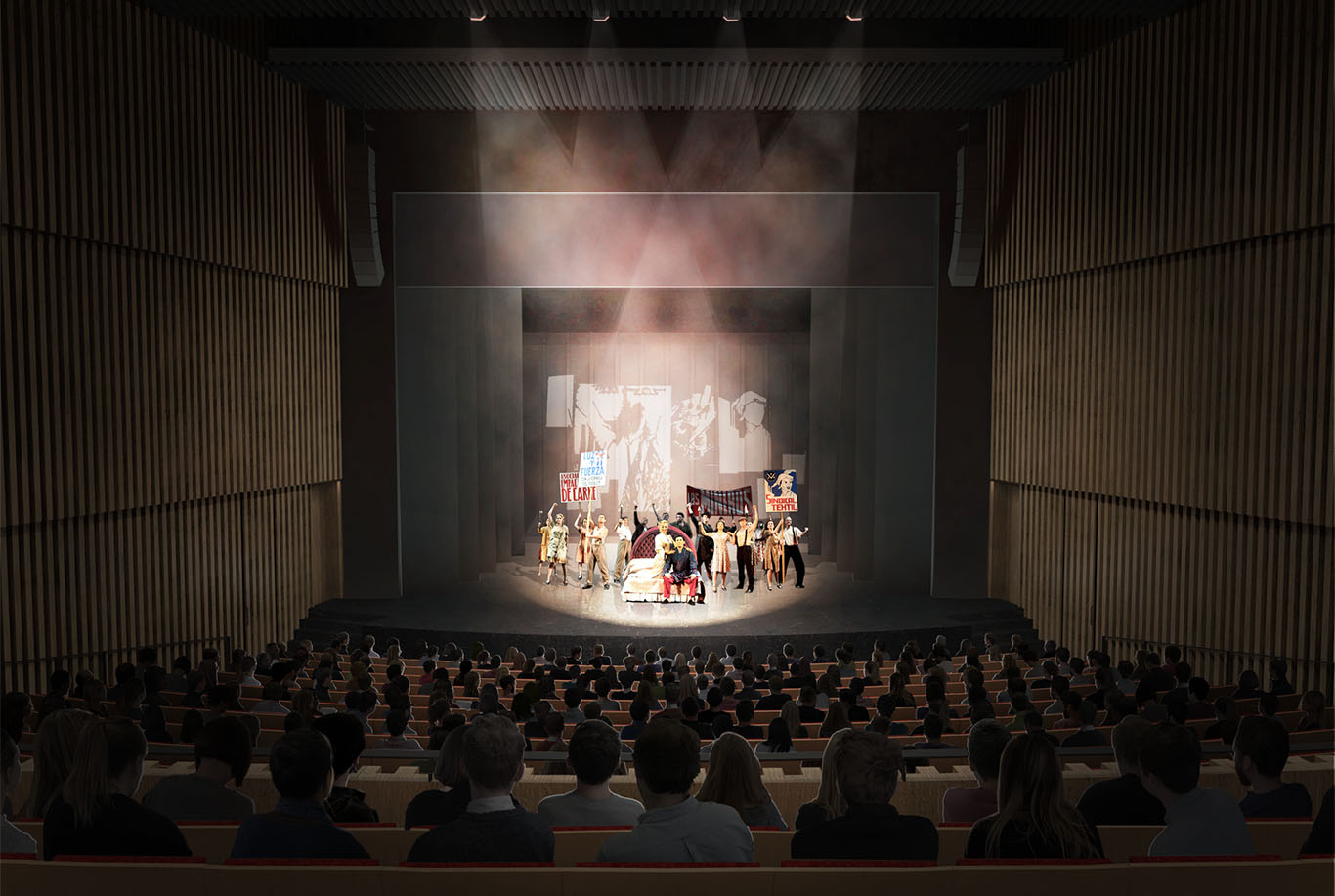
Music Theater in Poznań
| Location | Poznań, Poland |
| Year | 2018 - 2019 |
| Status | Competition |
| Client | City of Poznań |
| Program | Musical Theater in Poznań with two concert halls (for 1,100 and 250 spectators) |
| Area | 17.000 m2 |
| Team | Jola Starzak, Dawid Strębicki, Anastasiia Oksiukovska, Martyna Karnaś, Juan Carlos Prieto Zapatero, Aleksandra Krutnik, Dagna Dembiecka |
| In collaboration with | DRDH Architects, London, Great Britain, Pracownia Akustyczna, Wrocław, Poland |
Ziggurat - a Temple of theatre play
Music Theatre as a Temple dedicated to the theatre play. The stepped form with a „chapel” scene at the top is reminiscent of a Ziggurat. One of important space-shaping elements from the side of Święty Marcin street is a square which forms an entrance area to the theatre.
Context - theatre building as a gate to Poznan’s Royal-Imperial Route
The new music theatre is not only another interesting cultural spot, but also an important complement of the historically representative quarter of Poznan. It completes the panoramas seen from Kaponiera, Uniwersytecki bridge and Święty Marcin street. It connects various contexts present in the area, such as valuable cultural buildings, the nearby railway, and becomes a connection between of the very center of Poznan and the urban conservation area with Uniwersytecki bridge and Kaponiera.
Comfort - multifunctionality, simplicity and instinctive use
A pocket square connected directly to Święty Marcin street invites us inside the theatre, while also creating an open space in front of the entrance. It is located on the street level which ensures accessibility. That way, the pocket square and entrance smoothly transition into the foyer. Two entrances into the audience area are also placed on this level. Thanks to that, they are available for all the users.
Theatre hall as the heart of the building
The role of a public building - such as a theatre - in the city is always multi-dimensional. Looking at the character of its functioning, two most important elements of its life can be distinguished: the daily and the festive. They both define the worth of the theatre as a building, institution and an element of the urban fabric. The festive moments for the theatre are when the play takes place in one of its halls - when the building and its surroundings radiate the energy of present guests, artists and workers. That’s when the theatre becomes a functional machine for presenting art.
The physical and artistic core of the building is the main theatre hall. It was designed from the inside, with attention to high quality acoustic comfort and optimal audience planning for maximum 1100 spectators (including 4 fixed seats for guests with disabilites and extra 10 which can be adjusted if needed - all accessible from the street level). In the 1100 seats are also included seats at the enclosed orchestra pit and FOH, when they are not in use. The shape and character of the hall are a contemporary form of creating sense of intimacy between the spectator and the stage. The geometry of the hall, while bringing the spectator closer to the scene, provides contact with actors and an intimate atmosphere by walls which slightly converge upwards.
